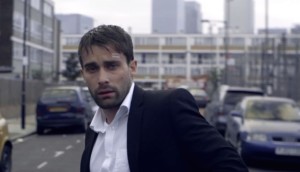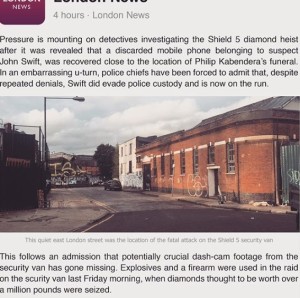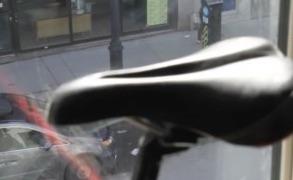A hundred years from now, movie fans may look back on our time as the Golden Age of short-form storytelling. Mobile moviemakers around the world continue to demonstrate that brevity works well in a variety of genres including documentaries, narratives, commercials, and instructional videos.
And now, Instagram has inaugurated the 15-second thriller series—“Shield5.”
The rise of the short is particularly relevant to mobile moviemakers, who typically lack the time and other resources to produce long works. As the writer of “Shield5” Adam Dewar explains in the following interview, making short videos is a powerful way of developing skills that all filmmakers need.
Note: While “Shield5” was shot using a Canon C-300 and not a mobile device, we decided to cover it here because of the implications this remarkable series has for mobile moviemaking.
MMM: How did this series come to be?
ADAM: The idea originally came from the director Anthony Wilcox. The new “Star Wars” trailer had just dropped. In that trailer a huge amount of story is told in just a few seconds. Anthony wondered if the limited video format on Instagram could do something similar. He sought me out and I pitched various stories until we settled on a heist story. Then we worked together to build “Shield5.” At some point during our discussions we thought to introduce still documents alongside the episodes and that again allowed us to tackle a bigger story with multiple threads.
MMM: Did your previous work scripting short movies—“North Atlantic” and “Hardwire”—come into play when writing the short episodes for “Shield5”?
ADAM: “Hardwire” I felt was bursting out of its time frame, wanting to be much more than its running time. So after that I didn’t really have much desire to write another short. But when “Shield5” came along it was something completely different. Ironically I was able to work up a much bigger story than in a short film thanks to the episodic nature and the invention of the stills posts.
MMM: How did you settle on the number of episodes?
ADAM: We originally thought we’d have 24 episodes. We wanted to keep the feel of a season so there was some familiarity. In the end 28 worked well for the story, and liked the idea of having it play for about a month.
MMM: From a creative point of view, were there benefits in working within the 15-second episode structure?
ADAM: I learned a great deal from this project.
MMM: For example?
ADAM: Having such a tight limit forced me to think more economically than I had ever before. During the writing I said to Anthony (the director) that if I ran a screenwriting class, I’d get the students to write something like “Shield5.” It’s such an incredible exercise. You’re forced to ask yourself : “What’s the absolute essential, bare minimum you need to move the story along?” I’d encourage anyone to try it out.
MMM: Anything negative about this kind of time limit?
ADAM: I missed the ability to sculpt and twist the story within a scene. Everything had to be stripped out. No more than one line of action, minimal dialogue. Each scene is really is one super beat of action and some minimal character development.
MMM: Do you foresee that this kind of series will become popular?
ADAM: It’s too early to tell. We’ve had a great response so far 8 episodes in, but we’ll see how it pans out towards the end of the series.
MMM: Can you give advice to others who might like to experiment with a short-form series? Is there a secret to making a successful 15-second episode?
ADAM: Definitely don’t understimate what is possible. I’d be wary of saying there is a secret to it, but I do think you have to plan for the fact it’s looped in Instagram and that it’s on a small screen. You have to think of every possible way to get information across.
MMM: You mean, besides the shots?
ADAM: Yes. For example, text on screen and text available in the space around the posting. Utilize everything you can.
MMM: Did you use standard scripting format in this project?
ADAM: Pretty much. I wrote it in Final Draft. One page per episode with a text block at the bottom detailing the still post material.
MMM: Did your script call for specific locations?
ADAM: Yes. The idea was to create a very London feel. And there were more suggested in the script than in the final cut. We synced up some towards the end as the entire shoot was only 4 days and logistics demanded it. Early on in the planning we wanted it to have a grounded everyday background to play out the extraordinary action. So in the plot I stuck to cafes, streets, industrial flanked canals and offices. We wanted it to be set on the roads people walk everyday on their way to work etc…
MMM: Besides writing the script, did you participate in other ways in the making of the series?
ADAM: In terms of production, actors and editing that was all Anthony. I continued to be involved with the fictional documents that accompany the episodes. We had a designer mock them up and worked together to get them working the way we wanted.
MMM: Can you describe your path to becoming a screenwriter?
ADAM: I started out in the usual kind of low level postions in the film industry, but quickly realised I wanted to write. So I quit and just focused on working on a script. Once I finished it, I used it to get into The London Film School and from there I just kept learning and writing. I’m still doing that now. I do find each script you complete is a way of building and meeting people and it spreads from there.
MMM: What about books on screenwriting?
ADAM: I recommend reading them all—the classics by Syd Field, Blake Synder, David Mamet—and applying what you learn, following rules, breaking rules, failing, discarding it, trying again, until you just kind of do your own thing. The underlying principles are roughly the same in all of them, just explained differently. I especially recommed Sidney Lumet’s Making Movies and Alexander Mackendrick’s On Filmmaking. Both have insight and passion. Also I’d recommed reading something about the complexity of the business side of story telling. Arthur De Vany’s Hollywood Economics and Edward Jay Epstein’s The Big Picture are both good.
MMM: What’s next for you?
ADAM: I’ve been working on a project called “The Safety.” It’s a Detroit set crime drama that pulls in the worlds of college football, law and politics. The scope is big. It’s a long way from an Instagram series.





 Previous post
Previous post
 Next post
Next post





